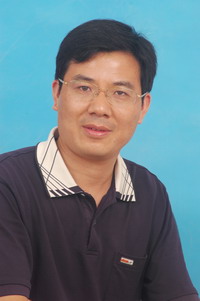Co-reporter:Peng Liu, Jianbo Wu, Gesheng Yang, Huili Shao
Materials Letters 2017 Volume 186() pp:372-374
Publication Date(Web):1 January 2017
DOI:10.1016/j.matlet.2016.10.024
•A static mixing reaction technique for ROP of l-lactide was high-efficient.•Differences between a TSMR and a TSE for ROP of l-lactide were investigated.•The mixing mechanism of reactants and their shear rates in the TSMR was discussed.•PLLA obtained from the static mixing reaction technique had better properties.In order to compare the static mixing reaction technique and the reactive extrusion technique for synthesizing poly(l-lactide) (PLLA), ring-opening polymerizations (ROPs) of l-lactide were performed in a tubular static mixing reactor (TSMR) and a twin-screw extruder (TSE), respectively. Compared with the results by using the TSE, the PLLA polymers obtained by using the TSMR had a smaller polydispersity index (PDI), higher molecular weight and optical purity. Additionally, the TMSR was also an energy-saving reactor. It provided reactants to have higher collision frequencies among molecules and an excellent mixing performance under lower shear rates. Therefore, the TSMR was an advantageous option to synthesize PLLA.
